LACTITOL
Synonym(s):D -Lactitol monohydrate;4-O-β-D -Galactopyranosyl-D -glucitol
- CAS NO.:585-86-4
- Empirical Formula: C12H24O11
- Molecular Weight: 344.31
- MDL number: MFCD00079407
- EINECS: 209-566-5
- SAFETY DATA SHEET (SDS)
- Update Date: 2025-12-22 14:18:24
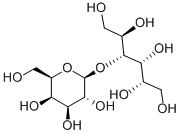
What is LACTITOL?
Absorption
In healthy subjects under fed conditions, oral administration of 20 grams of lactitol resulted in a mean Tmax of 3.6 ± 1.2 hours, Cmax of 776 ± 253 ng/mL, and a mean AUC of 6,019 ± 1,771 ng*hr/mL.
Toxicity
The LD50 is 23 g/kg in mice and >30 g/kg in rats.
Experience with acute overdosage is limited, but is likely to involve significant gastrointestinal upset and diarrhea consistent with the pharmacologic profile of lactitol. Overdosage should be managed with symptomatic and supportive measures, where necessary.
Description
Lactitol (4-o-(|3-D-Galactopyranosyl)-D-glucitol) is a disaccharide
sugar alcohol derived from lactose by reduction of its glucose
moiety. Lactitol has not been found in nature. It is about 0.4 times
as sweet as sucrose.
In vitro studies with galactosidase-containing enzyme preparations
have demonstrated that lactitol is hydrolyzed only very slowly. In
incubations with human intestinal biopsies, it has been shown that
the human intestinal mucosa does not exhibit any significant dis accharidase activity with lactitol as a substrate. The hydrolytic
activities towards lactitol and isomalt were only 1.3% of those
towards lactose and isomaltulose, respectively. Corresponding exper iments with intestinal preparations of germ-free pigs and convention ally kept minipigs gave similar results. These observations indicate that lactitol is the most slowly digested disaccharide sugar alcohol.
However, in vitro investigations with intestinal enzyme prepara tions provide only relative figures on hydrolysis rates. Experiments
with humans and 14C-labeled lactitol during jejunal perfusion indi cate that lactitol is virtually not assimilated by the human small
intestine. After passage through the small intestine, ingested lac titol reaches the bacterially colonized segments of the gut where
intensive fermentation takes place. Short-chain fatty acids (acetate,
propionate, butyrate) are the major fermentation end products
which are subsequently further metabolized by the host.
Lactitol is slowly fermented in growing cultures by some strepto cocci, actinomyces and lactobacilli. When fed at 25% of the diet
to rats that had been inoculated with Streptococcus mutans, lactitol
was about equally as cariogenic as sorbitol and significantly less
cariogenic than sucrose. Test candies and chocolates sweetened
by lactitol are hypoacidogenic in humans tested by plaque pH
telemetry. Boiled sweets made with 100% lactitol are rough in
texture owing to crystallization, and caused some gastrointestinal
upsets in human volunteers. Since lactitol has only one-third the
sweetness of sucrose, sweets need an additional sweetening agent
for palatability.
Chemical properties
Lactitol occurs as white orthorhombic crystals. It is odorless with a sweet taste that imparts a cooling sensation. It is available in powdered form and in a range of crystal sizes. The directly compressible form is a water-granulated product of microcrystalline aggregates.
The Uses of LACTITOL
Lactitol is listed as an excipient in some prescription drugs, such as Adderall. Lactitol is a sugar alcohol used as a replacement bulk sweetener for low calorie foods. It is also used medically as a laxative.
Background
Lactitol, also known as 4-β-D-galactopyranosyl-D-glucitol, is a sugar alcohol synthesized from lactose. It is used in food manufacturing as a nutritive sweetener and is approximately 35% as sweet as table sugar (i.e. sucrose). Clinically, lactitol has been investigated for use as an osmotic laxative and, along with other non-absorbable disaccharides such as lactulose, in the treatment of hepatic encephalopathy in patients with cirrhosis.
Pizensy, an oral lactitol powder for solution, was approved by the FDA for use in chronic idiopathic constipation in February 2020.
Indications
Lactitol is indicated for the treatment of chronic idiopathic constipation in adults.
Production Methods
Lactitol is produced by the catalytic hydrogenation of lactose.
Definition
ChEBI: Lactitol is a glycosyl alditol consisting of beta-D-galactopyranose and D-glucitol joined by a 1->4 glycosidic bond. It is used as a laxative, as an excipient, and as replacement bulk sweetener in some low-calorie foods. It has a role as a laxative, an excipient and a cathartic.
Pharmaceutical Applications
Lactitol is used as a noncariogenic replacement for sucrose. It is also used as a diluent in solid dosage forms.(1) A direct-compression form is available,(2,3) as is a direct-compression blend of lactose and lactitol. Lactitol is also used therapeutically in the treatment of hepatic encephalopathy and as a laxative.
Pharmacokinetics
Lactitol helps to facilitate bowel movements by drawing water into the gastrointestinal tract. The oral administration of lactitol may reduce the absorption of concomitant medications - other oral medications should be administered at least 2 hours before or 2 hours after lactitol.
Safety
Lactitol is regarded as a nontoxic and nonirritant substance. It is not
fermented significantly in the mouth, and is not cariogenic.It is
not absorbed in the small intestine, but is broken down by
microflora in the large intestine, and is metabolized independently
of insulin. In large doses it has a laxative effect; therapeutically,
10–20 g daily in a single oral dose is administered for this purpose.
LD50 (mouse, oral): >23 g/kg
LD50 (rat, oral): 30 g/kg
Metabolism
As it undergoes little-to-no systemic absorption, lactitol is unlikely to undergo any significant degree of metabolism.
Storage
Lactitol as the monohydrate is nonhygroscopic and is stable under humid conditions. It is stable to heat and does not take part in the Maillard reaction. In acidic solution, lactitol slowly hydrolyzes to sorbitol and galactose. Lactitol is very resistant to microbiological breakdown and fermentation. Store in a well-closed container. When the compound is stored in an unopened container at 25°C and 60% relative humidity, a shelf-life in excess of 3 years is appropriate.
Regulatory Status
GRAS listed. Accepted for use as a food additive in Europe. Included in the Canadian List of Acceptable Non-medicinal Ingredients.
Properties of LACTITOL
| Melting point: | 146° |
| alpha | D23 +14° (c = 4 in water) |
| Boiling point: | 788.5±60.0 °C(Predicted) |
| Density | 1.69±0.1 g/cm3(Predicted) |
| storage temp. | Hygroscopic, Refrigerator, under inert atmosphere |
| solubility | Slightly soluble in ethanol (95%) and ether. Soluble 1 in
1.75 of water at 20°C; 1 in 1.61 at 30°C; 1 in 1.49 at 40°C; 1 in
1.39 at 50°C. |
| pka | 12.84±0.70(Predicted) |
| form | Solid |
| color | White to Off-White |
| Odor | odorless |
Safety information for LACTITOL
Computed Descriptors for LACTITOL
LACTITOL manufacturer
New Products
4,4-Difluoropiperidine hydrochloride tert-butyl 9-methoxy-3-azaspiro[5.5]undecane-3-carboxylate Indole Methyl Resin N-Isopropylurea N,N-Dicyclohexylcarbodiimide(DCC) MELDRUMS ACID 5-METHYLISOXAZOLE-4-CARBOXYLIC ACID Magnessium Bis glycinate Zinc ascorbate 1-bromo-2-butyne 2-acetamidophenol 9(10H)-anthracenone Erythrosin B, 4-Piperidinopiperidine 2-((4-morpholinophenylamino) (methylthio) methylene) malononitrile 2,4-dihydroxybenzaldehyde 3-(4-morpholinophenylamino)-5-amino-1H-pyrazole-4-carbonitrile Methyl 2-methylquinoline-6-carboxylate 2,6-dichloro-4-nitropyridine 4-Bromo-2-chlorobenzonitrile 2-(benzylamino)acetic acid hydrochloride 4-(tert-Butoxycarbonylamino)but- 2-ynoic acid 3,4-dihydro-2H-benzo[b][1,4]dioxepine 1-Phenyl-1-cycloprppanecarboxylicacidRelated products of tetrahydrofuran

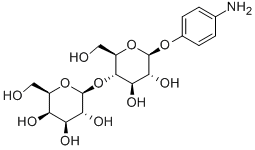
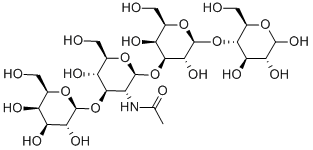
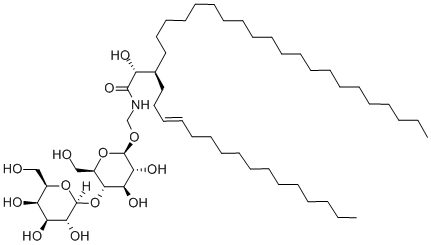
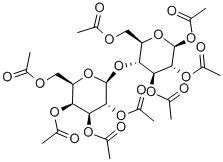
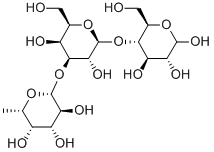

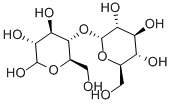
You may like
-
 3-(4-amino-1-oxoisoindolin-2-yl)-1-methylpiperidine-2,6-dione 98%View Details
3-(4-amino-1-oxoisoindolin-2-yl)-1-methylpiperidine-2,6-dione 98%View Details -
 1-methylindoline-2,3-dione 98%View Details
1-methylindoline-2,3-dione 98%View Details
2058-74-4 -
 614-19-7 98%View Details
614-19-7 98%View Details
614-19-7 -
 3112-85-4 Methyl phenyl sulfone 98%View Details
3112-85-4 Methyl phenyl sulfone 98%View Details
3112-85-4 -
 20677-73-0 (2,2-diethoxyethyl)methylamine 98%View Details
20677-73-0 (2,2-diethoxyethyl)methylamine 98%View Details
20677-73-0 -
 3-(4-(hydroxyamino)-1-oxoisoindolin-2-yl)piperidine-2,6-dione 98%View Details
3-(4-(hydroxyamino)-1-oxoisoindolin-2-yl)piperidine-2,6-dione 98%View Details -
 57381-49-4 2-bromo-4-chlorobenzonitrile 98%View Details
57381-49-4 2-bromo-4-chlorobenzonitrile 98%View Details
57381-49-4 -
 4,6-dichloropyrimidine-5-carbaldehyde 98%View Details
4,6-dichloropyrimidine-5-carbaldehyde 98%View Details
5305-40-8
